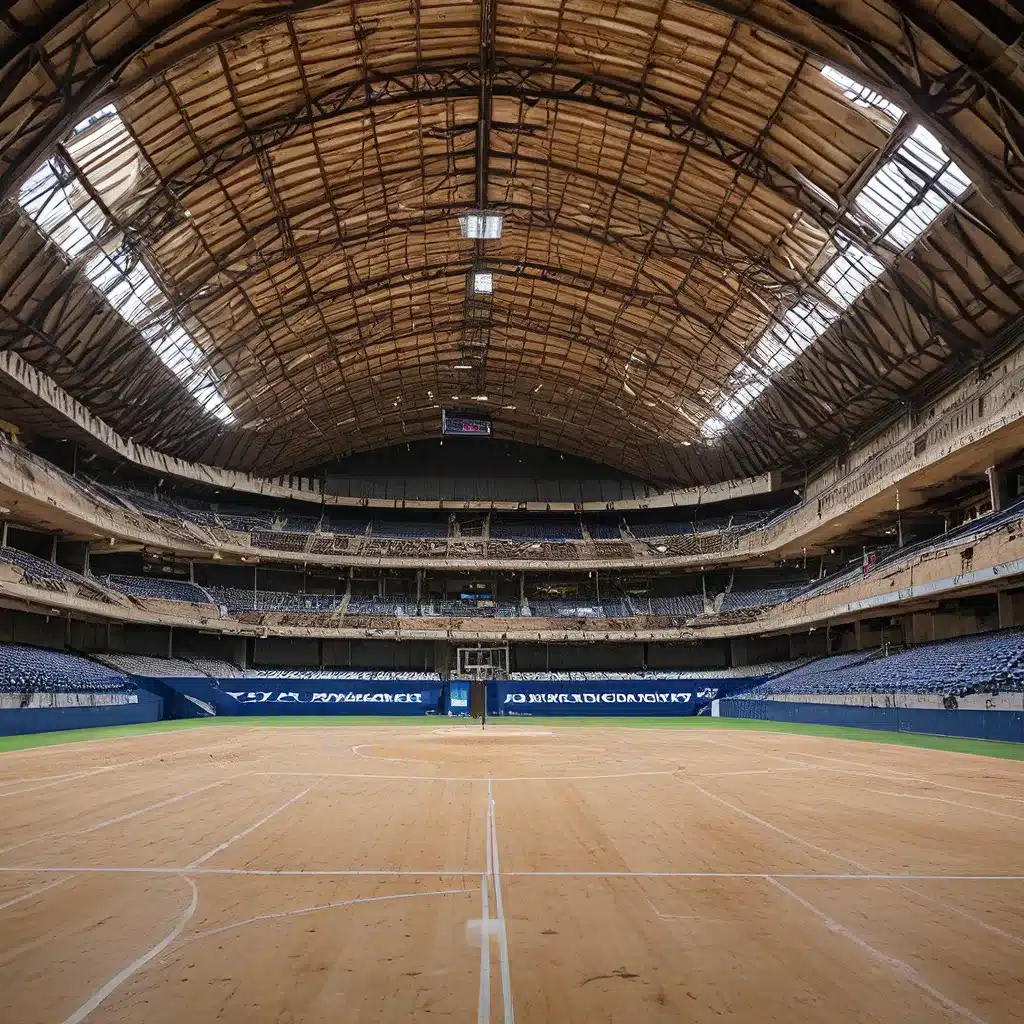
In the heart of Asturias, Spain, stands an architectural marvel that has captivated sports enthusiasts and architecture aficionados alike – the Palacio de Deportes de Oviedo. This iconic stadium, also known as the Palacio de los Deportes, is a testament to the region’s rich cultural heritage and its unwavering commitment to sports.
A Brief History of the Palacio de Deportes de Oviedo
The Palacio de Deportes de Oviedo was originally built in 1960, designed by the renowned Spanish architect Julio Galán Carbajal. The stadium was commissioned as a multi-purpose venue to host a variety of sporting events, from basketball and handball to ice hockey and figure skating. Its construction was a significant milestone for the city of Oviedo, as it provided a state-of-the-art facility for the local population to enjoy and showcase their athletic prowess.
Over the years, the Palacio de Deportes de Oviedo has undergone several renovations and expansions, ensuring that it remains a modern and well-equipped venue. In 1992, the stadium underwent a major overhaul, with the addition of a new façade and the incorporation of cutting-edge technology to enhance the spectator experience.
Architectural Highlights of the Palacio de Deportes de Oviedo
The Palacio de Deportes de Oviedo is a true architectural marvel, blending modernist design with traditional elements. The stadium’s most striking feature is its iconic hyperbolic paraboloid roof, which creates a unique and visually stunning silhouette against the Asturian skyline. This innovative roof design, pioneered by the Spanish architect Félix Candela, not only adds to the building’s aesthetic appeal but also serves a practical purpose, providing excellent acoustics and natural ventilation for the indoor arena.
The exterior of the Palacio de Deportes de Oviedo is characterized by its sleek and angular lines, a hallmark of modernist architecture. The building’s façade is adorned with large, expansive windows that flood the interior with natural light, creating a bright and airy atmosphere for both athletes and spectators.
One of the most remarkable aspects of the Palacio de Deportes de Oviedo is its adaptability. The stadium’s design allows for the transformation of its interior spaces to accommodate a wide range of sporting events, from basketball and handball to ice hockey and figure skating. This flexibility is a testament to the foresight and skill of the architects who designed the stadium.
The Impact of the Palacio de Deportes de Oviedo on Asturian Sports
The Palacio de Deportes de Oviedo has played a pivotal role in the development and promotion of sports in the Asturian region. As the home venue for several professional and amateur sports teams, the stadium has witnessed countless thrilling matches and memorable moments that have captured the hearts of local fans.
The stadium has also hosted numerous national and international sporting events, including the 1992 European Basketball Championship and the 2019 World Handball Championship. These high-profile events have not only showcased the Palacio de Deportes de Oviedo on a global stage but have also inspired future generations of Asturian athletes to pursue their dreams.
Beyond its role as a sports venue, the Palacio de Deportes de Oviedo has become a hub for the local community, hosting cultural events, concerts, and other public gatherings. This multifunctional aspect of the stadium has cemented its place as a central pillar of Oviedo’s cultural landscape, further enhancing its significance within the region.
The Future of the Palacio de Deportes de Oviedo
As the Palacio de Deportes de Oviedo continues to evolve, its future remains bright. The stadium’s management and local authorities are committed to maintaining its status as a world-class sports and entertainment venue, ensuring that it remains a source of pride for the Asturian community.
Ongoing renovations and upgrades are being implemented to enhance the spectator experience, improve the facilities for athletes, and incorporate the latest technological advancements. These efforts are not only aimed at preserving the Palacio de Deportes de Oviedo’s architectural and historical significance but also at securing its position as a premier destination for sports and cultural events in the region.
Moreover, the stadium’s unique design and innovative features have garnered the attention of architects, urban planners, and sports enthusiasts from around the world. The Palacio de Deportes de Oviedo is likely to continue inspiring future generations of designers and sports enthusiasts, cementing its legacy as a true architectural and cultural icon of Spain.

